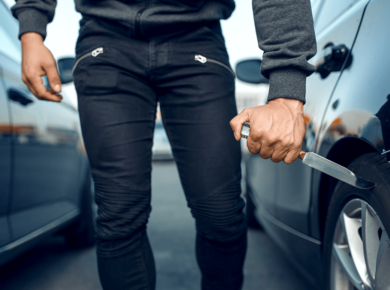Spring has come, and it’s time to start thinking about getting your motorcycle back on the road. Before you hit the pavement, it’s important to make sure your bike is in good condition. Doing it yourself is the easiest and most economical way to make sure your motorcycle is in top condition and running smoothly for the coming riding season.
However, if you are a novice motorcycle owner and just starting to get to know all the technical features and specifications of your bike, then it makes sense to entrust its maintenance to the caring specialists of a repair shop.
At the same time, you need to know the right way to perform service work in order to do a proper job on your own. We at Salvagebid have prepared some tips for carrying out seasonal maintenance on your motorcycle.
Pay Attention to the Braking System
To begin with, you need to make a visual assessment of the brake pads’ friction surface thickness. If significant wear is detected, you should replace them.
Next, check the level of brake fluid poured into the main brake cylinder and top it off if the level is below what’s required. Make sure that the fluid you fill in meets the requirements of the motorcycle manufacturer and is compatible with the one already used in the bike.
After carrying out the mentioned manipulations, press the brake handle several times and evaluate its operation. If the lever stroke is too soft and pliable, air has most likely entered the brake system. It must be removed by bleeding the system. Without proper experience, you shouldn’t perform this service procedure—it’s more prudent to contact specialists.
Next, check the brake hoses for integrity. You can detect the presence of leaks or deformation of the hose by pressing the brake lever. Thoroughly clean the surface of each of the brake discs from dust, dirt, and oil.
Also Read: Buying Your First Motorcycle on Salvagebid
Check Cooling System
If the cooling system is not oil-based but rather liquid, you need to check the level of antifreeze as well as the physical integrity of all pipes, joints, and the radiator. If the antifreeze level is low, top it off using products of the type specified by the manufacturer.
Keep in mind that not all car antifreeze can be used in motorcycles, and that when topping off antifreeze, you must use the same coolant that was previously filled. Thoroughly wash and clean the radiator from the inside and outside, respectively, to prevent possible contamination. Be careful since the radiator plates are easily damaged, so don’t use a steel brush or a high-pressure washer to clean them.
Examining the Tire Rubber
The main thing you should check is the degree of tread pattern wear and the condition of the cord. In addition, make sure that there are no cuts, deep cracks, punctures, or external objects such as nails, etc. on or in the tire. The slightest doubt about the integrity of the rubber or clear signs of its wear are reasons to change it.
The second point is to check the pressure in the wheels. Being in a condition that is over- or under-inflated compared to the value specified by the manufacturer has a disappointing effect on the efficiency of control and braking, which can cause trouble.
Change Engine Oil and Filters
A dipstick or an inspection hole is used to check the oil level in the motor, which should also be changed before storing the motorcycle for the winter. If you didn’t change the oil before winter storage, we strongly recommend that you do it now in the spring. During a long period of idleness, the lubricant decomposes into fractions of different gravities, which has a very negative effect on its working properties. When changing the oil, it’s also necessary to replace the oil filter.
If your bike has an oil-type radiator, inspect it and all adjacent connections for integrity. If there is a separate gearbox, it should also be checked for oil level and condition.
It’s advisable to change the air and fuel filters when the new driving season comes into play. As for reusable air filters, specialists recommend cleaning them. Remember that replacing the fuel filter yourself (a non-professional) risks fuel leakage, so keep all operations away from open flames or potential ignition sources.
Other Useful Points
Before taking your motorcycle for its first ride of the spring, it’s crucial to ensure that all the headlights, turn signals, and brake lights, as well as the sound signal and buttons on the dashboard, are in proper working order. This is not only a basic safety technique but also a requirement for compliance with traffic rules.
In addition, if your motorcycle has travel bags, trunks, or other accessories, check their integrity and the reliability of their fasteners. The same goes for the motor equipment. And remember, if your helmet has ever been involved in a fall, it’s no longer safe to use, and you should replace it.
Before setting out on your ride, make sure you have all the necessary documents for movement and that your insurance policy is up-to-date.
After an extended period of inactivity, it’s advisable to avoid driving your motorcycle a long distance from your garage or the nearest repair shop on your first ride. While driving, listen for any unusual sounds or vibrations that may indicate a problem with your motorcycle’s operation. Finally, when your test drive is complete, carefully inspect all components and assemblies for any leaks of oil, fuel, or other fluids.
Wrapping Up
Performing seasonal motorcycle maintenance is crucial to ensure the safety and longevity of your bike. By following these basic maintenance tips, you can save money on repairs, increase your bike’s performance, and avoid potential accidents. Remember to always refer to the motorcycle manufacturer’s instructions and seek professional help when necessary. Taking care of your motorcycle is a responsibility that every rider should approach seriously.
If you want to step into the soon-to-be-started motorcycle season with your next and powerful motorbike in great condition, then you definitely need to check the Salvagebid online auction inventory. The bidding process is as easy as pie. All you need to do is register on our website by providing some basic information. Don’t hesitate to contact us if you have any questions concerning online auto auctions. To reach our dedicated team of professionals, call: +1 (360) 347-1300 from 7 a.m. to 4 p.m. (Pacific Time) Monday through Friday, or email support@salvagebid.com.













